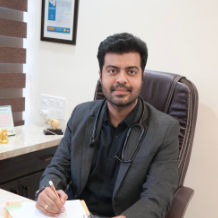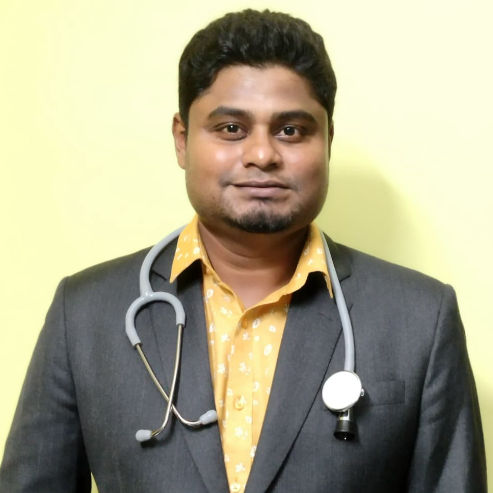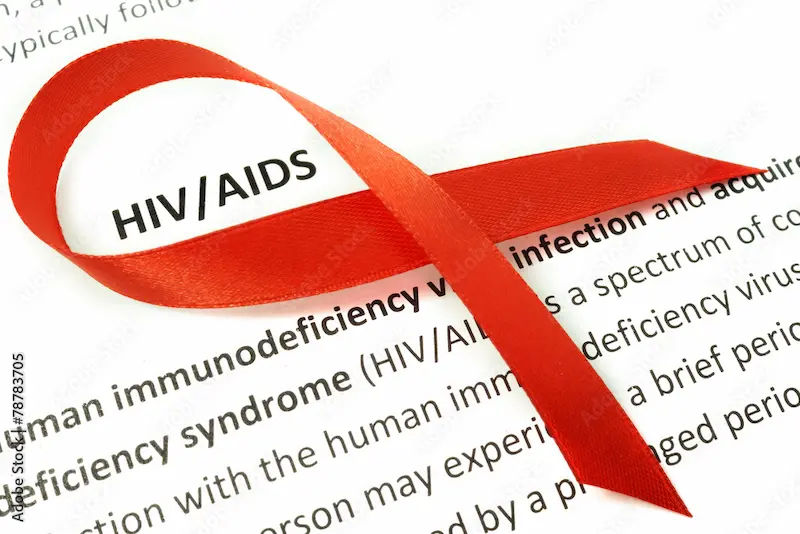Is Your Child Complaining of Back Pain? A Parent's Guide
Is your child complaining of back pain? Learn the causes, warning signs, diagnosis, treatment, and prevention strategies to keep your child’s spine healthy and pain-free.


Introduction
Hearing your child complain of back pain can be unsettling. While we often think of back issues as an adult problem, pain in children is increasingly common, with studies suggesting up to 30% of kids experience it by their teenage years. This discomfort can range from a minor muscle ache from a new sport to a sign of something that needs medical attention. As a parent, it's hard to know when to offer reassurance and when to seek help. This comprehensive guide will walk you through the common and serious causes of back pain in children, the "red flag" symptoms you must not ignore, and practical strategies for treatment and prevention. Our goal is to equip you with the knowledge to confidently address your child's discomfort and ensure their spinal health.
Common Causes of Back Pain in Children
Most instances of child back pain are benign and related to everyday activities. Understanding these common causes can provide initial reassurance.
Muscle Strains and Ligament Sprains
This is the leading cause of back pain in children and adolescents. It's often the result of overuse or an acute injury. Think about a weekend spent playing a new sport, a fall off a bike, or roughhousing with friends. The muscles in the back (particularly the paraspinal muscles) can become overstretched or torn, leading to localised pain, stiffness, and muscle spasms. The pain typically worsens with movement and improves with rest. For example, a child who starts tennis lessons might develop a strain on one side of their lower back from all the twisting serves.
Poor Posture and Backpack Overload
The modern child often spends hours hunched over desks, tablets, and phones. This sedentary, forward-flexed posture places immense strain on the neck and lower back. Compounding this issue is the heavy backpack. A backpack that weighs more than 10-15% of a child's body weight forces them to lean forward, distorting the natural curves of the spine and straining muscles. This combination is a prime recipe for chronic, aching back pain that might be worse at the end of a school day.
Consult a Paediatrician for the best advice
Growth-Related Pains
While "growing pains" typically affect legs, some adolescents may experience similar aching sensations in their backs during growth spurts. Bones can grow faster than muscles and tendons, leading to temporary tightness and discomfort. This is usually not severe and is self-limiting.
Less Common But Serious Causes to Be Aware Of
While most causes are simple, it's crucial for parents to be aware of conditions that require a doctor's intervention.
- Scoliosis and Spinal Deformities
- Scoliosis, a sideways curvature of the spine, often develops during the growth spurt just before puberty. While it doesn't always cause pain, a significant curve can lead to muscle fatigue, aching, and in rare cases, nerve compression. Parents might notice uneven shoulders, one hip appearing higher than the other, or a rib hump when the child bends forward.
Discitis and Vertebral Osteomyelitis (Infection)
These are rare but serious conditions involving infection of the disc space (discitis) or the vertebral bone itself (osteomyelitis). They typically present with constant, severe back pain that is often accompanied by a fever, general malaise, and refusal to walk or bend. A child with an infection will often appear systemically unwell. This is a medical emergency.
Scheuermann's Kyphosis
This is a growth disorder of the vertebrae that causes a rounded, hunched back (kyphosis). It occurs during adolescence and can cause persistent aching pain that is centered in the middle of the back. The pain often improves with rest but worsens with activity.
Spondylolysis and Spondylolisthesis (Stress Fractures)
These are common causes of teenager lower back pain, especially in young athletes who participate in sports that involve repetitive hyperextension of the spine, such as gymnastics, football, diving, and wrestling. Spondylolysis is a stress fracture in a vertebra. If the fracture weakens the bone enough, it can cause a vertebra to slip forward, a condition called spondylolisthesis. The pain is usually mechanical and worsens with activity.
Tumors (Very Rare)
Spinal tumors are extremely uncommon in children, but they must be considered. Warning signs include pain that is worse at night or that wakes the child from sleep, unexplained weight loss, fever, and pain that is constant and progressive.
Red Flag Symptoms: When to See a Doctor Immediately
Not every ache requires a trip to the doctor, but certain symptoms demand prompt medical evaluation. If your child's back pain is accompanied by any of the following red flags, consult a doctor online with Apollo24|7 for further evaluation or seek immediate in-person care:
- Pain that is constant, severe, and worsening.
- Night pain that wakes your child from sleep.
- Unexplained fever, chills, or weight loss.
- Weakness, numbness, or tingling in the legs or arms.
- Loss of bowel or bladder control.
- Pain following a significant trauma, like a fall or car accident.
- The child appears systemically unwell.
How is Back Pain in Children Diagnosed?
The Doctor's Visit: What to Expect
If you decide to see a doctor, they will start with a thorough history and physical exam. They will ask about the pain's location, duration, and what makes it better or worse. They will observe your child's posture, gait, and spinal alignment. They will perform a neurological exam to check reflexes, strength, and sensation. This exam provides most of the clues needed for a diagnosis.
Imaging and Tests
Imaging is not always necessary. However, if a serious condition is suspected, the doctor may order:
- X-rays: To check for fractures, scoliosis, or Scheuermann's disease.
- MRI (Magnetic Resonance Imaging): This is the gold standard for visualising soft tissues, discs, and the spinal cord. It's used to diagnose infections, tumors, or detailed stress injuries.
- CT Scan: Sometimes used for better bone detail than an X-ray.
- Blood Tests: To check for signs of infection or inflammation. Apollo24|7 offers a convenient home collection for tests like CBC (Complete Blood Count) or ESR (Erythrocyte Sedimentation Rate) if needed to rule out infection.
Effective Treatment and Home Management Strategies
The RICE Method and Gentle Movement
- For acute muscle strains, the RICE protocol is effective:
- Rest: Avoid activities that cause pain for a day or two.
- Ice: Apply an ice pack for 15-20 minutes every 2-3 hours.
- Compression: Not typically used for the back.
- Elevation: Not applicable.
After 48 hours, gentle movement and stretching are encouraged to prevent stiffness.
Physical Therapy and Core Strengthening
Physical therapy for child back pain is a cornerstone of treatment for many conditions. A therapist can teach your child exercises to improve flexibility, strengthen core muscles (abs and back), and correct postural imbalances. A strong core acts like a natural back brace.
Medical Interventions (When Necessary)
Most children won't need this. In severe cases, treatments may include:
- Bracing: Used for moderate scoliosis or spondylolysis to support the spine during healing.
- Medication: Anti-inflammatory drugs (like ibuprofen) for pain and inflammation, or antibiotics for a confirmed infection.
- Surgery: Reserved for the most severe cases of scoliosis, spondylolisthesis, or tumors.
- Preventing Back Pain: Building Healthy Habits
Choosing and Wearing a Backpack Correctly
- Weight: Ensure it's no more than 10-15% of your child's body weight.
- Fit: Choose a backpack with two wide, padded shoulder straps and a padded back.
- Packing: Pack the heaviest items closest to the back.
- Wearing: Always use both straps. Using one strap shifts weight unevenly.
- The Importance of Posture and Ergonomics
- Screen Time: Encourage a neutral spine position. The top of the screen should be at eye level.
- Sitting: Feet should be flat on the floor, with knees and hips at 90-degree angles.
- Breaks: Encourage breaks from sitting every 30 minutes to stretch and walk around.
Encouraging Regular Physical Activity
A sedentary lifestyle weakens core muscles. Encourage a mix of activities—sports, swimming, yoga, or just playing outside—to build a strong, resilient back.
Conclusion
Navigating your child's complaint of back pain involves a balance of vigilance and calm. While the vast majority of cases resolve with simple measures like rest, activity modification, and improved ergonomics, it is essential to be aware of the less common, more serious conditions. Trust your instincts as a parent. You know your child best. If the pain is persistent, severe, or accompanied by any worrying symptoms, do not hesitate to seek professional medical advice. Early intervention is crucial for the best outcomes, especially for conditions like scoliosis or stress fractures. By fostering healthy habits around posture, backpack use, and physical activity, you can play a proactive role in supporting your child's spinal health for years to come.
Consult a Paediatrician for the best advice
Consult a Paediatrician for the best advice

Dr. Jinesh Shah
Psychiatrist
20 Years • MBBS, MRCPsych (UK), CCT in Adult Psychiatry (UK), CCT in Child and Adolescent Psychiatry (UK), PG Diploma in Clinical Psychiatry (UK), Cert Hypnotherapy (UK).
Ahmedabad
Apollo Speciality hospital, Ahmedabad, Ahmedabad
(125+ Patients)

Dr. Aditya Nair
Psychiatrist
5 Years • MBBS, MD (Psychiatry)
Bansdroni
Siddhita Healthcare., Bansdroni

Dr. Asst. Prof. Ishani Roy Chatterjee
Psychiatrist
10 Years • MBBS, MD (Psychiatry),DNB
Kolkata
Dr Ishani's Clinic, Kolkata

Dr. Harshil Shah
Psychiatrist
4 Years • MBBS, Psychiatry ( MD Psychiatry), MIPS
Ahmedabad
Apollo Hospitals Gandhinagar, Ahmedabad
(250+ Patients)

Dr. Anindya Mondal
Psychiatrist
4 Years • MBBS, MD Psychiatry
Barasat
Diab-Eat-Ease, Barasat
Consult a Paediatrician for the best advice

Dr. Jinesh Shah
Psychiatrist
20 Years • MBBS, MRCPsych (UK), CCT in Adult Psychiatry (UK), CCT in Child and Adolescent Psychiatry (UK), PG Diploma in Clinical Psychiatry (UK), Cert Hypnotherapy (UK).
Ahmedabad
Apollo Speciality hospital, Ahmedabad, Ahmedabad
(125+ Patients)

Dr. Aditya Nair
Psychiatrist
5 Years • MBBS, MD (Psychiatry)
Bansdroni
Siddhita Healthcare., Bansdroni

Dr. Asst. Prof. Ishani Roy Chatterjee
Psychiatrist
10 Years • MBBS, MD (Psychiatry),DNB
Kolkata
Dr Ishani's Clinic, Kolkata

Dr. Harshil Shah
Psychiatrist
4 Years • MBBS, Psychiatry ( MD Psychiatry), MIPS
Ahmedabad
Apollo Hospitals Gandhinagar, Ahmedabad
(250+ Patients)

Dr. Anindya Mondal
Psychiatrist
4 Years • MBBS, MD Psychiatry
Barasat
Diab-Eat-Ease, Barasat
More articles from General Medical Consultation
Frequently Asked Questions
Can growth spurts cause back pain in children?
Yes, during rapid growth phases, bones can grow faster than muscles, leading to temporary tightness and aching in the back. However, persistent or severe pain should not be dismissed as just 'growing pains' and warrants a doctor's evaluation.
What is the ideal backpack weight for my child?
Experts recommend that a loaded backpack should not exceed 10-15% of your child's body weight. For a 50-pound (23 kg) child, that means a backpack heavier than 5-7.5 pounds (2.3-3.4 kg) is too heavy and can contribute to heavy backpack back pain.
Is it normal for a teenager to have constant lower back pain?
No, constant teenager lower back pain is not normal and should be evaluated. While common from sports or posture, constant pain can indicate an underlying issue like spondylolysis, a stress fracture that requires specific treatment.
How can I tell if my child's back pain is from a muscle strain or something more serious?
Muscle strain pain is usually related to activity, improves with rest, and is localised. Red flag symptoms point to something more serious: pain that is constant, worse at night, associated with fever, or causes weakness/numbness in the legs.
What are the early signs of scoliosis I can look for at home?
Have your child stand straight and look for: uneven shoulders, one shoulder blade protruding more than the other, an uneven waistline, or one hip appearing higher. Then, have them bend forward at the waist with arms dangling. Look for a visible rib hump on one side, which is a key indicator.




